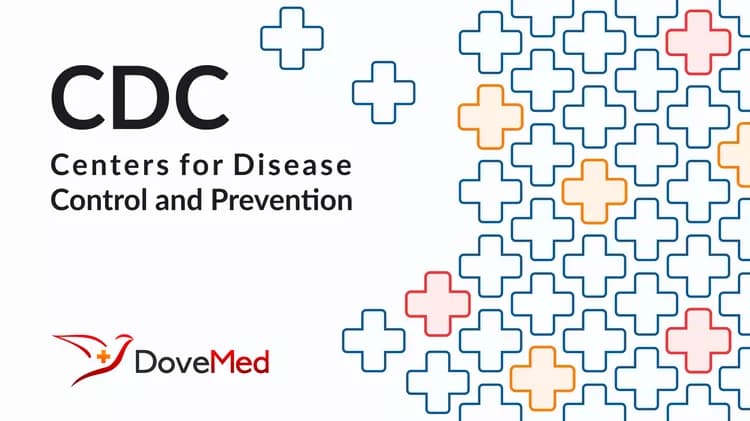
1996 TB Declines Indicate U.S. is Back on Track But Not Without Serious Challenges
1996 TB Declines Indicate U.S. is Back on Track But Not Without Serious Challenges
The Centers for Disease Control and Prevention (CDC) announced today that the number of tuberculosis cases in the United States have declined for the fourth straight year, suggesting that the nation is recovering from the resurgence of TB that began in the mid-1980's. Today's announcement follows a statement by the World Health Organization last week indicating that progress is occurring world-wide against TB.
According to CDC, the announcement underscores the need for continued vigilance in the fight to eliminate TB in the United States.
"With TB, complacency kills. As a nation, we let our guard down in the 1980's , and TB came back in a form more deadly than before, " said CDC Director David Satcher. "Now that we're back on track toward eliminating TB in this country, we need to finish the job." Nationwide TB cases declined nearly 7% in 1996, from 22,860 cases in 1995 to 21,327. But history shows that when systems to control TB are not maintained, TB returns. At the turn of the century, approximately 195 deaths per 100,000 people occurred. By 1925, that dropped to 85 deaths per 100,000 and declined steadily to 22 per 100,000 in 1950. In 1960 the death rate was reduced to 6 per 100,000. As a result, many believed TB had become a disease of the past.
In the 1970's and 80's many areas around the country redirected TB control funds to other activities and key elements of some TB control programs were dismantled.
Consequently, the trend toward elimination was reversed and drug-resistant strains of TB emerged. At that time, the U.S. was unprepared to respond to the challenges posed by the emergence of the multi-drug resistant TB and the increasing number of HIV-positive individuals susceptible to TB disease.
"We've known how to detect, treat, and cure TB for nearly half a century," said Charles Felton, M.D. of the American Lung Association, "Drug-resistant strains of TB developed because we didn't sustain our efforts. On an individual, national, and ultimately, a global level, we must remain committed to TB elimination or the disease will again be on the rise. And the next time, the fight against TB will be much more costly.
In 1993, HHS provided additional resources to reestablish the public health infrastructure to help bring TB back under control. Consequently, health departments were able to better detect and treat persons with active TB and latent infection. CDC spending on prevention and control of TB has increased from nearly $45 million in 1992 to about $145 million in 1997.
Expanded use of directly observed therapy, international collaboration, and the development of diagnostic tools to better identify drug-resistance are critical components of ongoing efforts to eliminate TB in the United States. "We have the rare opportunity to eliminate a public health threat," said Ken Castro, M.D., Director of the Division of TB Elimination, NCHSTP."TB elimination is an achievable goal."
Directly observed therapy is one of the most-effective tools in preventing the further spread of drug-resistant TB is directly observed therapy. Curing TB requires that individuals take an antibiotic for at least 6 months, continuing to take medication well beyond the point at which their symptoms alleviate. "If one considers how many half- full bottles of antibiotics are in America's medicine cabinets, it's not hard to imagine why people need assistance maintaining a 6-month drug regimen," said Castro.
According to the World Health Organization, nearly one-third of the world's population is infected with TB, and the disease kills almost 3 million people a year. Worldwide, TB is the leading infectious killer of youth and adults. CDC reports that an increasing proportion of cases in the U.S. are among individuals born in countries where TB is common. Cases among individuals born outside the U.S. increased from 22% of cases in 1986 to 37% in 1996. "The world is getting smaller, and TB is getting stronger" said Helene Gayle, M.D., M.P.H., Director of CDC's National Center for HIV, STD, and TB Prevention (NCHSTP), "In an era marked by increased tourism and a global marketplace, no region of the world exists in isolation. International collaboration --- as it was in the fight against smallpox --- will be essential to eliminate TB." While cases declined overall in the U.S., there remain troubling signals."The overall trend obscures significant increases in some areas of the country, as well as ongoing sporadic outbreaks of multidrug-resistant TB," said Castro.
The 1996 TB statistics reveal that many areas such as New York City (16% decline), Texas (11% decline), and California (8% decline) are making significant progress. However, there were increases in other areas. For example, TB cases in Washington, D.C. increased 36%, and cases in Oregon increased 22%.
CDC also reports that outbreaks of drug-resistant TB continued in 1996. Cases of "Strain W" TB, a deadly strain resistant to the best anti-TB drugs, originally reported in New York City, New Jersey and Florida, have now been found in numerous other areas including South Carolina, North Carolina, Colorado, Ohio, Pennsylvania, Georgia, Nevada, California, and Puerto Rico.
###
U.S. DEPARTMENT OF HEALTH AND HUMAN SERVICES
Related Articles
Test Your Knowledge
Asked by users
Related Centers
Related Specialties
Related Physicians
Related Procedures
Related Resources
Join DoveHubs
and connect with fellow professionals

0 Comments
Please log in to post a comment.